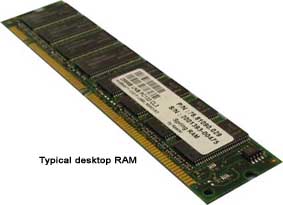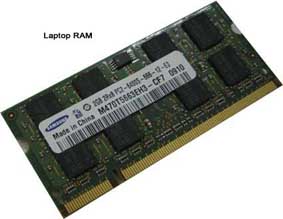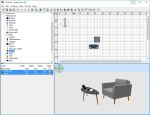- Home
- computer software
- computer memory
How to buy and upgrade computer memory?
Upgrading computer memory is the primary step to improve its performance. It is the fastest and easiest method.
If you want to speed up your computer or thinking to add additional memory chips, this article will tell how you can do it. It also answers some of the questions raise about main memory – how it works and upgraded easily.
What is computer memory (RAM)?
Memory is a temporary workspace for CPU (central processing unit). Memory holds temporary instructions and data needed by CPU to complete tasks. This is because the CPU quickly accesses those instructions from memory than hard disk, make the processing fast.
How it works?
The memory works with the CPU. It is there to provide instructions and data currently run on the computer. Both, CPU and memory connected each other with a bus. Bus is a pathway to transfer data between computer elements.
The type of bus that connects both CPU and memory is called FSB (Front Side Bus). The information flow is managed and controlled by memory controller reside on the chipset.
When the CPU wants particular information from memory, the request will be sent to controller then to the memory. The controller will receive back information from memory and pass it to the respective part of CPU.
Despite the availability of memory chips, the processing task is still slow. To tackle the delay of processing time, modern PCs incorporated a memory type called cache (Static RAM).


Cache Memory (SRAM – static RAM)
It is a high-speed memory (usually built on CPU or close to it) which is used to hold instructions used very frequently by the CPU. The CPU can access cache memory quickly than the main memory. The cache memory runs at same or close to the speed of the processor. More importantly, the usage of cache memory is vital for the CPU – it saves a lot of time.
Due to high cost and the requirement of space, static RAM couldn’t be used as a main memory. We may see new development around this technology in the future.
Levels of cache memory
According to the closeness to the processor, cache memory is designated as L1, L2 and L3. Level 1 (L1) cache memory is the nearest to the processor. It is the first cache accessed by CPU.
The CPU accesses instructions starting from L1 cache, if the desired information is not in L1, L2 will be next. It will continue to L3, main memory and hard drive respectively until it gets the information. Hard drive will be the final destination of CPU to access the instructions.
It is important to consider number of levels of cache when you are searching to buy a new computer.
Computer memory speed measured in both Megahertz and Access time – the time required to transfer data, measured in nano seconds.
The major types of Memory
ROM (Read Only Memory)
It is a type of memory which holds instructions and information permanently. Unlike RAM it is read only, can’t write on it. ROM contains BIOS (basic input-output system), which is used to store start-up instructions when a computer is turned on. It is non-volatile in nature – means it retains its contents when the power is turned off.
Types of ROM
Programmable read-only memory (PROM) and erasable programmable read-only memory (EPROM) are among non-volatile memory types.
On the PROM the instructions are programmed once onto the chip by the manufacturer. It is mostly used in video games.
The only difference between PROM and EPROM is that instructions and data can be erased and reprogrammed on EPROM.
RAM (Random Access Memory)
This is the popular type that most refer when they call memory. This article talks specifically on this type of memory.
Types of RAM
There are several types of RAM, some of them are the following:
- Extended data out (EDO RAM)
- Dynamic RAM (DRAM)
- Synchronous dynamic RAM (SDRAM)
SRAM (cache memory)
It is mentioned above.
Conclusion
Computer Memory plays a great role in speeding your PC performance. This is a review of computer memory, but I believe it helps you to see how you can benefit by upgrading your computer memory capacity.


